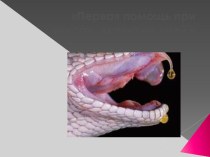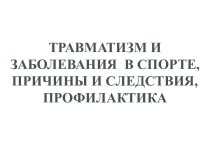- Главная
- Разное
- Бизнес и предпринимательство
- Образование
- Развлечения
- Государство
- Спорт
- Графика
- Культурология
- Еда и кулинария
- Лингвистика
- Религиоведение
- Черчение
- Физкультура
- ИЗО
- Психология
- Социология
- Английский язык
- Астрономия
- Алгебра
- Биология
- География
- Геометрия
- Детские презентации
- Информатика
- История
- Литература
- Маркетинг
- Математика
- Медицина
- Менеджмент
- Музыка
- МХК
- Немецкий язык
- ОБЖ
- Обществознание
- Окружающий мир
- Педагогика
- Русский язык
- Технология
- Физика
- Философия
- Химия
- Шаблоны, картинки для презентаций
- Экология
- Экономика
- Юриспруденция
Что такое findslide.org?
FindSlide.org - это сайт презентаций, докладов, шаблонов в формате PowerPoint.
Обратная связь
Email: Нажмите что бы посмотреть
Презентация на тему Hypoxia
Содержание
- 2. ParametersClassification, etiology and mechanism of hypoxiaAlterations of
- 3. parametersPO2CO2maxCO2SO2P50
- 4. PO2 partial pressure of oxygenPO2 is the
- 5. CO2max oxygen binding capacity of hemoglobinCO2max
- 6. CO2 oxygen contentCO2 includes oxygen that is
- 7. SO2 oxygen saturationSO2 is the percentage of
- 8. The relation between oxygen partial pressure and
- 9. P50 means the oxygen partial pressure required
- 10. Classification, etiology, mechanism of hypoxiaHypotonic hypoxiaHemic hypoxiaCirculatory hypoxiaHistogenous hypoxia
- 11. Hypotonic hypoxia
- 12. Etiology and mechanismDecreased PO2 of inspired air
- 13. Characteristics of blood oxygenPaO2↓, SaO2↓, CaO2 ↓,
- 14. Hemic hypoxia
- 15. Etiology and mechanism AnemiaCarbon monoxide poisoning
- 16. Methemoglobinemia The ferrous state (Fe2+) in
- 17. when a lot of pickled vegetables containing
- 18. High affinity of Hb for O2Alkaline solutionDepot blood
- 19. Characteristics of blood oxygenPaO2 N, SaO2N, CaO2
- 20. Circulatory hypoxia
- 21. Etiology and mechanismTissue ischemia shock, left
- 22. PaO2N, SaO2N, CaO2 N, CO2max N, CaO2-CvO2
- 23. Histogenous hypoxiaHistogenous hypoxia refers to the tissue
- 24. Etiology and mechanism Inhibition of oxidative phosphorylation
- 25. Characteristics of blood oxygenPaO2 N, SaO2N, CaO2
- 26. Alterations of metabolism and functionRespiratory systemCirculatory systemHematologic systemCentral nervous system Tissues and cells
- 27. Respiratory systemCompensatory responseLow PaO2 stimulates the chemoreceptor
- 28. High altitude pulmonary edemaCentral respiratory failure
- 29. Circulatory systemCompensatory responseIncreased cardiac output
- 30. Redistribution of blood vasodilatation :
- 31. Injury manifestationPulmonary hypertensionDecreased diastolic and systolic myocardial
- 32. Hematologic systemCompensatory responseIncrease in the amount of
- 33. Plasma viscosity↑, blood flow resistance ↑, afterload
- 34. Central nervous systemAcute hypoxia: headache, agitation,
- 35. Tissues and cellsCompensatory responseEnhanced cell capacity for
- 36. Injury manifestation Cell membrane injury
- 37. Скачать презентацию
- 38. Похожие презентации
ParametersClassification, etiology and mechanism of hypoxiaAlterations of metabolism and function in the bodyPathophysiological basis of prevention and treatment
















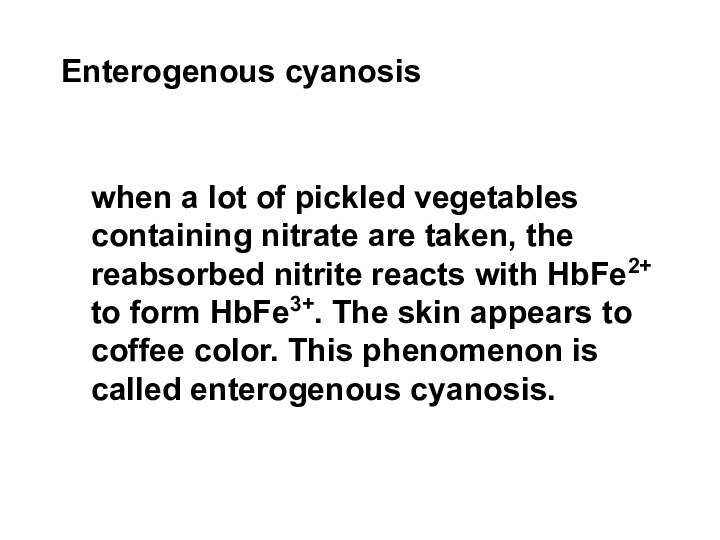
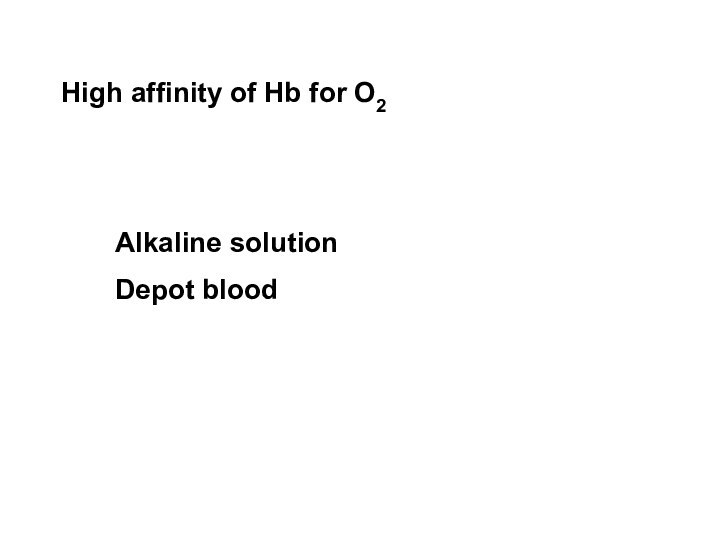



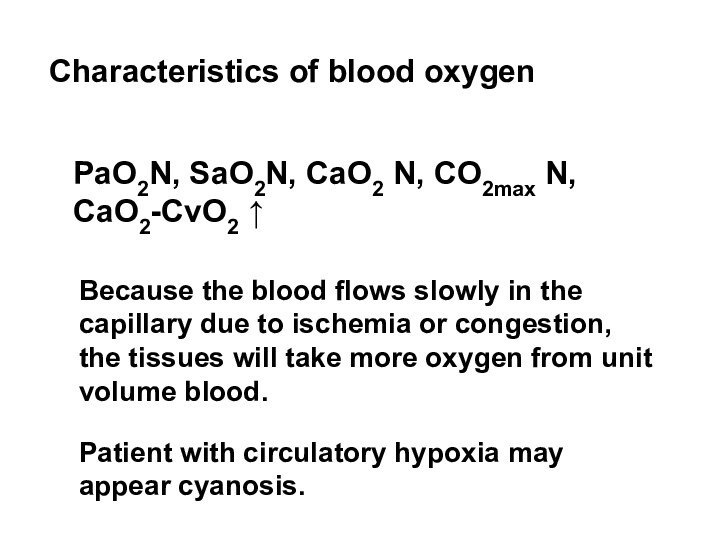













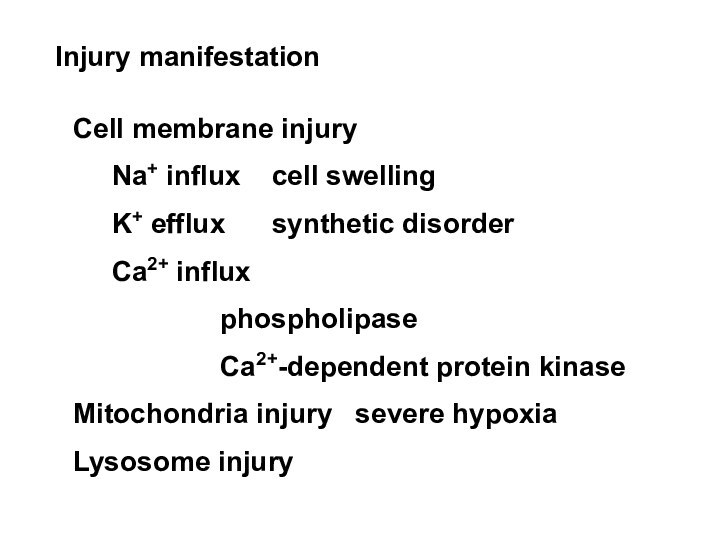

Слайд 2
Parameters
Classification, etiology and mechanism of hypoxia
Alterations of metabolism
and function in the body
treatment
Слайд 4
PO2 partial pressure of oxygen
PO2 is the tension
produced by the oxygen molecules physically dissolved in plasma.
Normal
PaO2: 100mmHg PvO2: 40mmHg
Determined by PiO2 and pulmonary function
Слайд 5
CO2max oxygen binding capacity of hemoglobin
CO2max refers
to the maximal amount of oxygen that could be
bound by the hemoglobin, which reflects the ability of hemoglobin carrying oxygen.Normal value: 20ml/dl
Determined by quantity and quality of Hb
Слайд 6
CO2 oxygen content
CO2 includes oxygen that is bound
to hemoglobin and physically dissolved in the blood (0.3ml/dl).
Normal
value: CaO2:19ml/dlCvO2:14ml/dl
The arteriovenous oxygen content difference (CaO2-CvO2) reflects the oxygen volume of tissue uptake.
Determined by PO2 and CO2max
Слайд 7
SO2 oxygen saturation
SO2 is the percentage of hemoglobin
present as oxyhemoglobin .
Normal value: SaO2: 95%
SvO2: 75%Слайд 8 The relation between oxygen partial pressure and oxygen
saturation is shown as oxygen dissociation curve (ODC).
An increase
in 2,3-diphosphoglyceric acid (2,3-DPG), H+, PCO2 and temperature will shift the curve to the right, in turn to the left.Слайд 9 P50 means the oxygen partial pressure required to
saturate 50% of the hemoglobin, which reflects the affinity
of hemoglobin for oxygen.Normal value P50:26-27mmHg
P50
Слайд 10
Classification, etiology, mechanism of hypoxia
Hypotonic hypoxia
Hemic hypoxia
Circulatory hypoxia
Histogenous
hypoxia
Слайд 11
Hypotonic hypoxia
hypoxic hypoxia
Hypotonic hypoxia is characterized
by the decrease of PaO2(less than 60mmHg).
Слайд 12
Etiology and mechanism
Decreased PO2 of inspired air
high altitude
External respiratory dysfunction
hypoventilation
impaired diffusionpartial ventilation-perfusion imbalcance
Venous-to-arterial shunt
congenital heart disease, Tetralogy of Fallot
Слайд 13
Characteristics of blood oxygen
PaO2↓, SaO2↓, CaO2 ↓, CO2max
N, CaO2-CvO2 ↓/N
Cyanosis refers to the bluish color of
skin, nails, lips and mucous membranes when the deoxyhemoglobin concentration of the blood in the capillaries is more than 5g/dl.
Слайд 14
Hemic hypoxia
isotonic hypoxia
Hemic hypoxia refers to
the altered affinity of Hb for oxygen or decrease in amount of Hb in the blood.
Слайд 15
Etiology and mechanism
Anemia
Carbon monoxide poisoning
CO can react with Hb to form carboxyhemoglobin which
can not take up oxygen. So there is a deficiency of Hb that can carry oxygen.CO can inhibit glycolysis in RBC, which reduces the production of 2,3-DPG and shifts the ODC to the left, decreasing the amount of oxygen released.
Слайд 16
Methemoglobinemia
The ferrous state (Fe2+) in
Hb may be oxidized to the ferric state (Fe3+)
under the action of oxidizers, e.g. nitrite and nitrobenzene, to form methemoglobin (HbFe3+OH), which loses the ability to carry oxygen.Methemoglobin can also make the ODC of normal HbO2 shift to the left.
Слайд 17 when a lot of pickled vegetables containing nitrate
are taken, the reabsorbed nitrite reacts with HbFe2+ to
form HbFe3+. The skin appears to coffee color. This phenomenon is called enterogenous cyanosis.Enterogenous cyanosis
Слайд 19
Characteristics of blood oxygen
PaO2 N, SaO2N, CaO2 ↓/N,
CO2max ↓/N, CaO2-CvO2 ↓
CaO2-CvO2 is below normal because PO2
in the capillary is declined rapidly due to reduced CaO2.Severe anemia : pallor
CO poisoning : cherry red
Methemoglobinemia: coffee color
Слайд 20
Circulatory hypoxia
hypokinetic hypoxia
Circulatory hypoxia refers
to inadequate blood flow leading to inadequate oxygenation of the tissues, which is also called hypokinetic hypoxia.
Слайд 21
Etiology and mechanism
Tissue ischemia
shock, left heart
failure, thrombosis, arterial stenosis
Tissue congestion
shock, right
heart failure
Слайд 22
PaO2N, SaO2N, CaO2 N, CO2max N, CaO2-CvO2 ↑
Characteristics
of blood oxygen
Because the blood flows slowly in the
capillary due to ischemia or congestion, the tissues will take more oxygen from unit volume blood.Patient with circulatory hypoxia may appear cyanosis.
Слайд 23
Histogenous hypoxia
Histogenous hypoxia refers to the tissue cells
can not make use of the oxygen supplied to
them, though the amount of oxygen delivered to them is adequate.
Слайд 24
Etiology and mechanism
Inhibition of oxidative phosphorylation
- tissue intoxicity
cyanides, sulphuret, rotenone,
( cytochrome oxidase)
Mitochondria injury
bacteriotoxin, radiation, free radical
Absence of Vitamin
Vit B1, Vit B2, Vit PP co-enzyme
Слайд 25
Characteristics of blood oxygen
PaO2 N, SaO2N, CaO2 N,
CO2max N, CaO2-CvO2 ↓
Oxygen content in vein increased because
cells utilize less oxygen. The color of skin and mucous membrane are pink red flush.
Слайд 26
Alterations of metabolism and function
Respiratory system
Circulatory system
Hematologic system
Central
nervous system
Tissues and cells
Слайд 27
Respiratory system
Compensatory response
Low PaO2 stimulates the chemoreceptor in
carotid and aortic body, which reflexly causes ventilation to
increase.
Слайд 28
High altitude pulmonary edema
Central respiratory failure
respiratory
inhibition, irregular respiratory rhythm and frequency, hypoventilation, e.g. periodic
breathing, Cheyne-Stoke respiration, Biot’s breathingInjury manifestation
Слайд 29
Circulatory system
Compensatory response
Increased cardiac output
hyperventilation and pulmonary expansion stimulate lung stretch receptors, which
reflexly excite sympathetic nerve.Pulmonary vasoconstriction
Ca2+ influx↑, the action of vasoconstrictive substances and SN
Слайд 30
Redistribution of blood
vasodilatation : heart
and brain
hypoxia metabolites, lactic acid,
adenosine
Ca2+ influx↓
vasoconstriction : skin, kidney,
gastrointestinal tract
Capillary hyperplasia
HIF→VEGF
Слайд 31
Injury manifestation
Pulmonary hypertension
Decreased diastolic and systolic myocardial function
Arrhythmia
Vagus Nerve
Decreased
venous return to heart severe hypoxia
Слайд 32
Hematologic system
Compensatory response
Increase in the amount of RBCs
and Hb
More EPO produced and released
by kidneyImproved RBC oxygen release capability
More 2,3-DPG produced from glycolysis process
Слайд 33 Plasma viscosity↑, blood flow resistance ↑, afterload of
heart ↑
When PO2 is low markedly, 2,3-DPG will cause
CaO2 to decrease.Injury manifestation
Слайд 34
Central nervous system
Acute hypoxia: headache, agitation, poor
faculty of memory, inability to make judgment, depress or
loss of coordinationChronic hypoxia: impaired concentration, fatigue, drowsiness
cerebral edema and neuron injury
Слайд 35
Tissues and cells
Compensatory response
Enhanced cell capacity for use
of oxygen
number and membrane surface of
mitochondria↑activity of succinic dehydrogenase and cyt-oxidase ↑
Enhanced anaerobic glycolysis
ATP↓ and ATP/ADP ↓→phosphofructokinase ↑
Enhanced myoglobin
Low metabolic state
Слайд 36
Injury manifestation
Cell membrane injury
Na+
influx cell swelling
K+ efflux
synthetic disorder Ca2+ influx
phospholipase
Ca2+-dependent protein kinase
Mitochondria injury severe hypoxia
Lysosome injury
